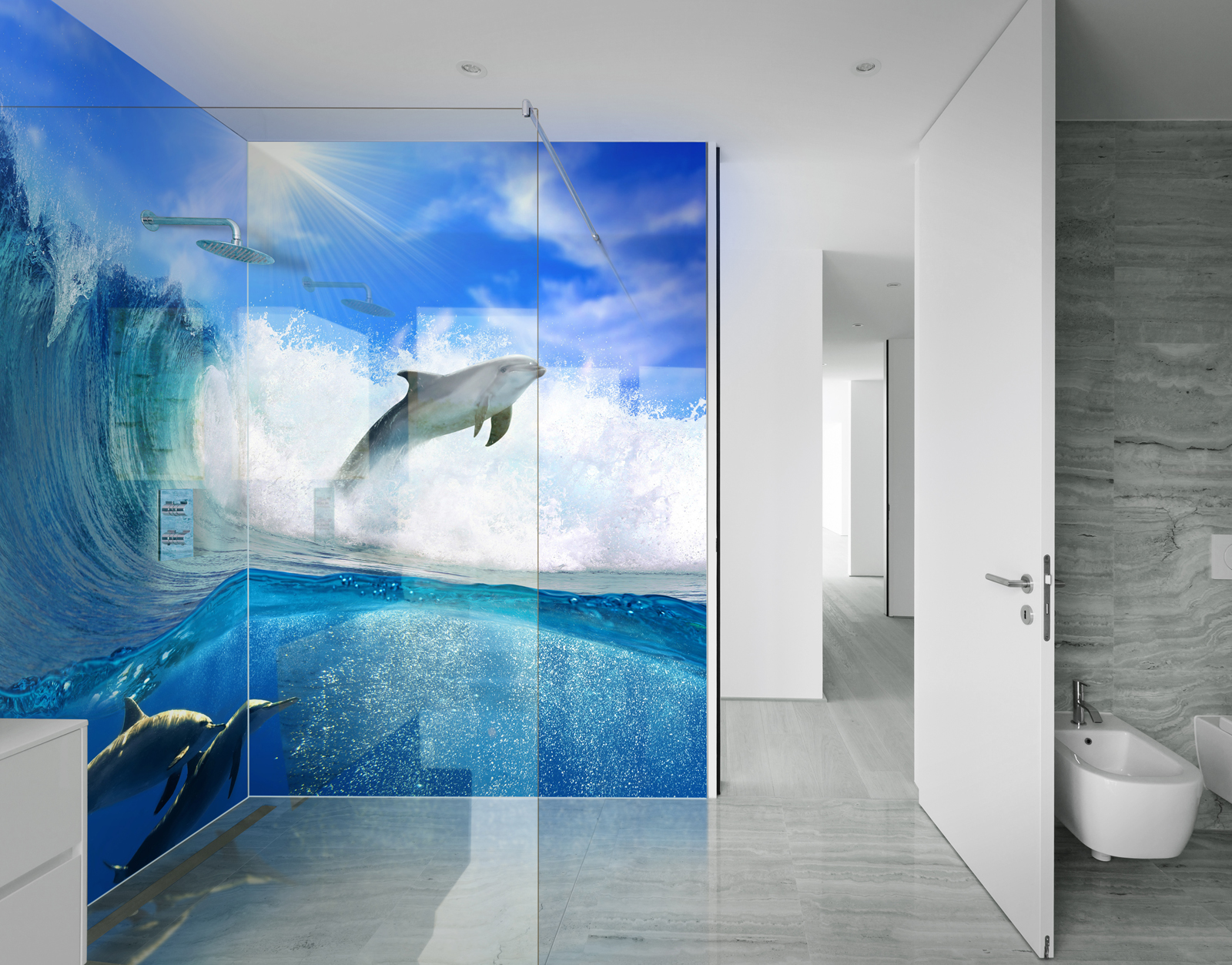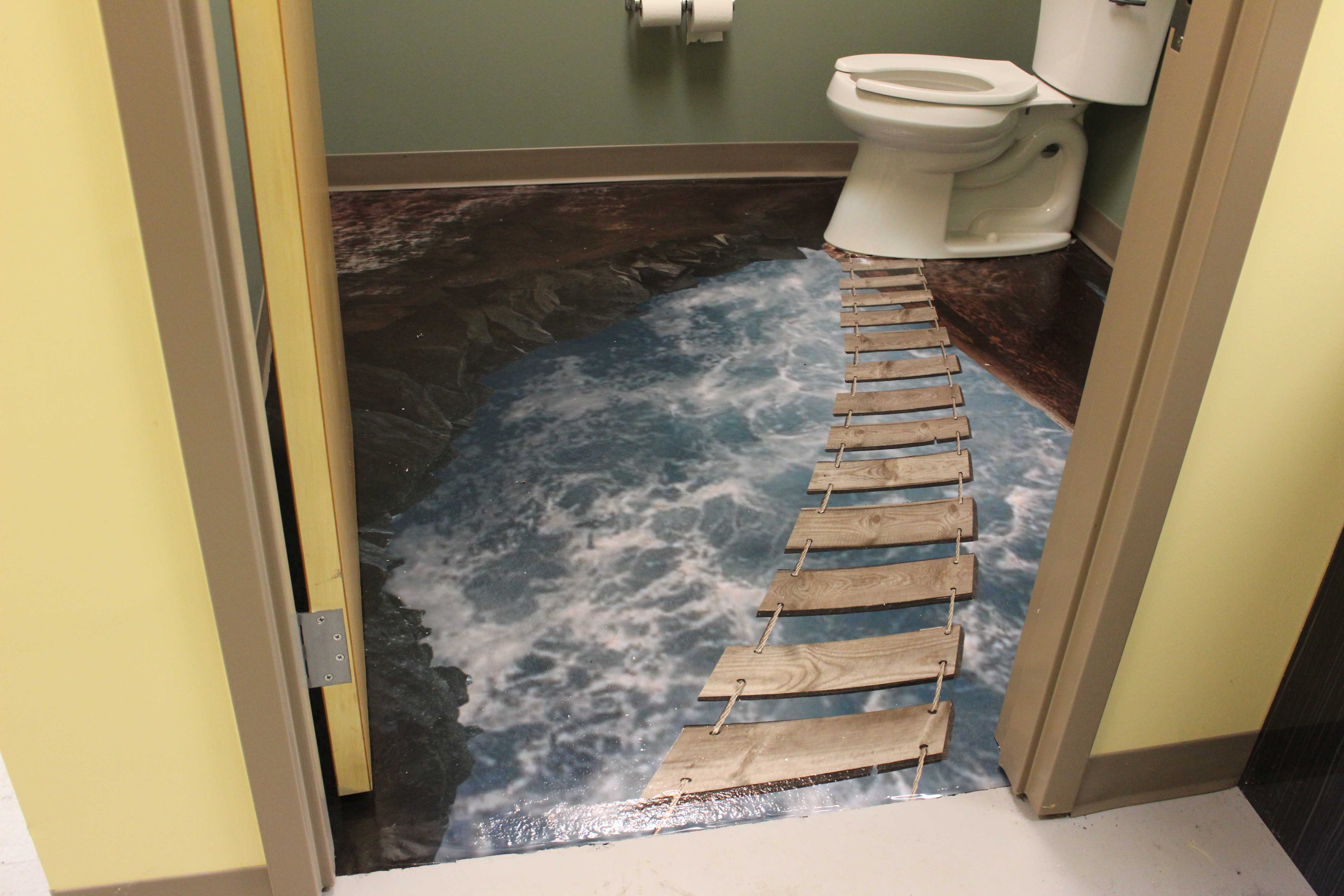Acrylic Paint Applications in Bathroom Design

Acrylic paint has become a popular choice for bathroom design due to its versatility, durability, and ease of application. It offers a wide range of colors, finishes, and application techniques, allowing homeowners to create unique and personalized spaces.
Versatility of Acrylic Paint in Bathroom Design
Acrylic paint’s versatility makes it suitable for various bathroom surfaces, including walls, ceilings, trim, and even fixtures. Its water-based formula allows for easy cleanup, while its fast drying time makes it ideal for multi-layered projects. Acrylic paint is also resistant to moisture and mildew, making it a durable choice for humid environments.
Creating Different Styles with Acrylic Paint, Acrylic paint for bathroom
Acrylic paint can be used to create a wide range of bathroom styles, from modern and minimalist to traditional and eclectic. For a modern look, consider using bold colors, geometric patterns, and sleek finishes. A minimalist bathroom might utilize neutral colors, clean lines, and simple accents. Traditional bathrooms often feature warm colors, intricate patterns, and ornate trim. Eclectic bathrooms blend elements from various styles, creating a unique and personalized space.
Examples of Creative Bathroom Designs with Acrylic Paint
Accent Walls
An accent wall can instantly transform a bathroom, adding a pop of color or a focal point. A bold, contrasting color can create a dramatic effect, while a subtle, textured pattern can add visual interest. For example, a deep blue accent wall with a geometric pattern can create a modern and sophisticated feel, while a soft green accent wall with a floral pattern can create a calming and spa-like atmosphere.
Geometric Patterns
Geometric patterns are a popular trend in bathroom design, adding a modern and stylish touch. Acrylic paint is ideal for creating clean lines and precise shapes. Consider using stencils or painter’s tape to create stripes, squares, triangles, or other geometric designs. For example, a black and white chevron pattern on a white wall can create a bold and modern look, while a subtle gray and white geometric pattern on a light blue wall can add a touch of sophistication.
Murals
Murals can create a stunning focal point in a bathroom, transforming the space into a work of art. Acrylic paint is a versatile medium for creating murals, allowing for intricate details and vibrant colors. Consider using stencils or freehand techniques to create a custom mural that reflects your personal style. For example, a tropical mural with palm trees and vibrant flowers can create a relaxing and exotic atmosphere, while a nautical mural with anchors and seashells can create a classic and coastal feel.
Choosing the Right Acrylic Paint for Bathroom Projects

Bathrooms are unique spaces that require special considerations when it comes to paint selection. The high humidity, frequent exposure to water, and potential for mildew growth make choosing the right paint crucial for both aesthetics and durability. Acrylic paint, known for its versatility and water-based formula, is a popular choice for bathroom projects, but selecting the right type is essential for long-lasting results.
Types of Acrylic Paint for Bathrooms
Acrylic paint comes in various types, each with its unique properties that make it suitable for different applications. Understanding the differences between latex, enamel, and specialty finishes will help you choose the best paint for your bathroom project.
- Latex Acrylic Paint: This type is the most common and readily available, offering a balance of affordability, ease of application, and durability. Latex acrylic paint is water-based, dries quickly, and emits low VOCs, making it a good choice for indoor spaces. It’s generally washable and offers good moisture resistance, making it suitable for bathroom walls and ceilings. However, it might not be as durable or mildew-resistant as enamel paint.
- Enamel Acrylic Paint: Enamel acrylic paint is known for its hard, glossy finish and superior durability. It offers excellent moisture and mildew resistance, making it ideal for bathroom surfaces that experience frequent moisture, such as trim, doors, and cabinets. Enamel acrylic paint is more durable than latex paint, making it resistant to scratches, scuffs, and stains. However, it can be more expensive and may require more preparation time.
- Specialty Acrylic Finishes: Specialty acrylic finishes offer unique properties for specific applications. For example, some paints are designed for high-traffic areas, while others are formulated for high-moisture environments. These finishes may include additives like mildewcide or stain blockers to enhance their performance. When choosing a specialty acrylic finish, consider the specific needs of your bathroom and the surfaces you plan to paint.
Techniques and Tips for Painting a Bathroom with Acrylics: Acrylic Paint For Bathroom

Painting a bathroom with acrylic paint requires careful preparation and application techniques to achieve a durable and aesthetically pleasing finish. This section delves into the essential steps involved in preparing the bathroom surface, applying the paint, and achieving a professional-looking result.
Preparing the Bathroom Surface for Painting
Proper preparation is crucial for a successful paint job. It involves cleaning, sanding, and priming the surface to ensure proper adhesion and a smooth finish.
- Cleaning the Surface: Begin by thoroughly cleaning the bathroom surface to remove dirt, grime, soap scum, and any existing coatings. Use a mild detergent and warm water to scrub the walls, trim, and fixtures. Rinse the surface thoroughly and allow it to dry completely. For stubborn stains, you can use a specialized cleaner designed for bathroom surfaces.
- Sanding the Surface: After cleaning, sand the surface lightly to create a smooth and even texture. Use fine-grit sandpaper (120-180 grit) for walls and trim. Sanding helps to remove any imperfections and provides a better surface for the primer to adhere to.
- Priming the Surface: Priming the surface is essential for creating a uniform base for the paint. Use a high-quality acrylic primer specifically designed for bathrooms. This primer will help to seal the surface, prevent moisture from penetrating the paint, and enhance the paint’s adhesion. Apply the primer evenly using a roller or brush, following the manufacturer’s instructions. Allow the primer to dry completely before applying the paint.
Applying Acrylic Paint to Bathroom Surfaces
Acrylic paint is a versatile choice for bathroom projects, offering excellent durability and moisture resistance. Here’s how to apply acrylic paint to different surfaces:
- Walls: For painting bathroom walls, use a high-quality acrylic latex paint. This type of paint is breathable and resists mildew growth. Apply the paint using a roller with a nap that is appropriate for the wall texture. Start by cutting in around the edges of the walls and trim using a brush. Then, use the roller to apply the paint in long, even strokes. Apply two coats of paint for optimal coverage.
- Trim: Trim, such as baseboards, door frames, and window trim, can be painted with a semi-gloss or gloss acrylic paint. This type of paint provides a durable and easy-to-clean finish. Use a brush to apply the paint to the trim, paying attention to the corners and edges. Apply two coats of paint for optimal coverage.
- Fixtures: Bathroom fixtures, such as faucets, showerheads, and towel bars, can also be painted with acrylic paint. However, it’s important to choose a paint specifically designed for metal surfaces. Prepare the fixtures by cleaning them thoroughly and sanding them lightly. Apply the paint using a small brush, paying attention to the details and edges. Allow the paint to dry completely before using the fixtures.
Techniques for Achieving a Smooth and Even Finish
Achieving a smooth and even finish requires careful techniques and attention to detail.
- Avoid Brushstrokes: To minimize brushstrokes, use a high-quality brush with soft bristles. Apply the paint in thin, even coats, working in small sections. Blend the paint smoothly by using overlapping strokes. For large areas, consider using a roller to achieve a more consistent finish.
- Minimize Paint Splatter: To reduce paint splatters, load the brush or roller with a moderate amount of paint. Avoid overloading the brush or roller, as this can lead to dripping and splattering. Use a drop cloth or painter’s tape to protect surrounding areas from paint splatters.
- Allow Paint to Dry: Allow each coat of paint to dry completely before applying the next coat. This ensures proper adhesion and prevents paint from becoming tacky or uneven. The drying time for acrylic paint can vary depending on the type of paint, temperature, and humidity. Refer to the manufacturer’s instructions for specific drying times.
